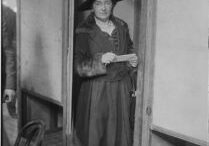Lesson Plans
Selma & Voting Rights: Standing Up for Equality
Through inquiry into primary sources, students discover a story of citizens shaping and sustaining our democracy through civic action and will contemplate the import and impact of citizens who strive for equality. This lesson may be used prior to reading a fictional work or poem related to the civil rights movement or in conjunction with a close reading of Lyndon B. Johnson’s March 15, 1965 voting rights address to Congress (in whole or in part).


